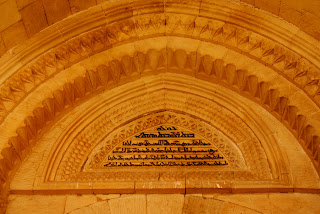Only a week ago, it was my birthday... A special one as it was the first time I had no celebration dinner, no plans and no presents (if I don't count my nosy-noisy neighbors finally moving out the morning of my birthday). I am not complaining about not getting presents (well, may be a little bit), I am used to it since my childhood: when schools in Turkey are closed by end of May, all my close friends would go on vacation leaving me celebrating my birthday with some random kids that Mom would pick from the neighborhood. My friends still collectively take time off during the month of June (a downside of having friends in academia), and Mom lives a little too far to rescue (!) me on my birthday.
 |
| The Bosphorous of İstanbul |
I was born in Sarıyer (1), a very cute coastal town by the Bosphorous strait in İstanbul. Though I spent only the first seven years of my life there, I consider Sarıyer as my hometown. I go there with my parents every time I am in İstanbul. My mom still has the same hairdresser since 1980, located in Sarıyer, and as she gets hair done, Dad and I take the opportunity to go by the sea to watch the fishermen and stuff ourselves with the famous local Sarıyer böreği (börek: fillet dough pastry). Sarıyer is no longer a fishermen's town like it used to be during my childhood. Fishing in Black Sea is a dying business and fishermen are no longer part of the neighborhood... I remember that Nubar Terziyan, a famous actor and a local fisherman (or may be the other way around), used to entertain the children coming to his stall. But mainly, it has been the destructive construction that completely damaged the neighborhood feeling of this town; the picnic area of my childhood is now flattened by houses scattered around a road that winds its way to Koç University. Eğitim şart!
 |
| The Charles of Cambridge |
Being born near water, the smell of seaweed got into my lungs and brain a little too early in my life. And I guess, consciously or not, this is why I chose to live by the Charles River when I first moved to Cambridge in 1997. Charles River is no Bosphorous by comparison, but watching little boats sail by, raft of ducks swim across and college kids row through, are quite joyful indeed. Also, that neighborhood feeling still exists in Cambridge... despite Starbucks and its sidekicks taking over half of Harvard Square.
On my birthday, one of my dearest friends (Merih!) sent me a video of Bosphorous taken from her terrace at sunset. I have to admit, not only this m4v file is one of the most meaningful presents I've ever received, but also it is a one-minute summary of everything about the beloved Bosphorous: seagulls, ferry sirens, large ships, and an old bridge that pulls the two continents to each other. I was so happy with this video that I immediately grabbed my iPhone and went by Charles River to catch the seven-hour-late sun leaving my side of the world. Though the seaweed smell was overwhelmed by the smell of summer students' weed, I was able to capture Charles at its best. I post both videos here as a present for those whose birthdays fall into holiday season, and as a thank you to all who remembered me on this special day. Go ahead and loop them forever!
The Bosphorous:
The Charles:
Note:
(1) The song "Kız, sen İstanbul'un neresindensin?" which translates as "Girl, which part of İstanbul are you from?" is sung by the famous singer/actress Emel Sayın.




























